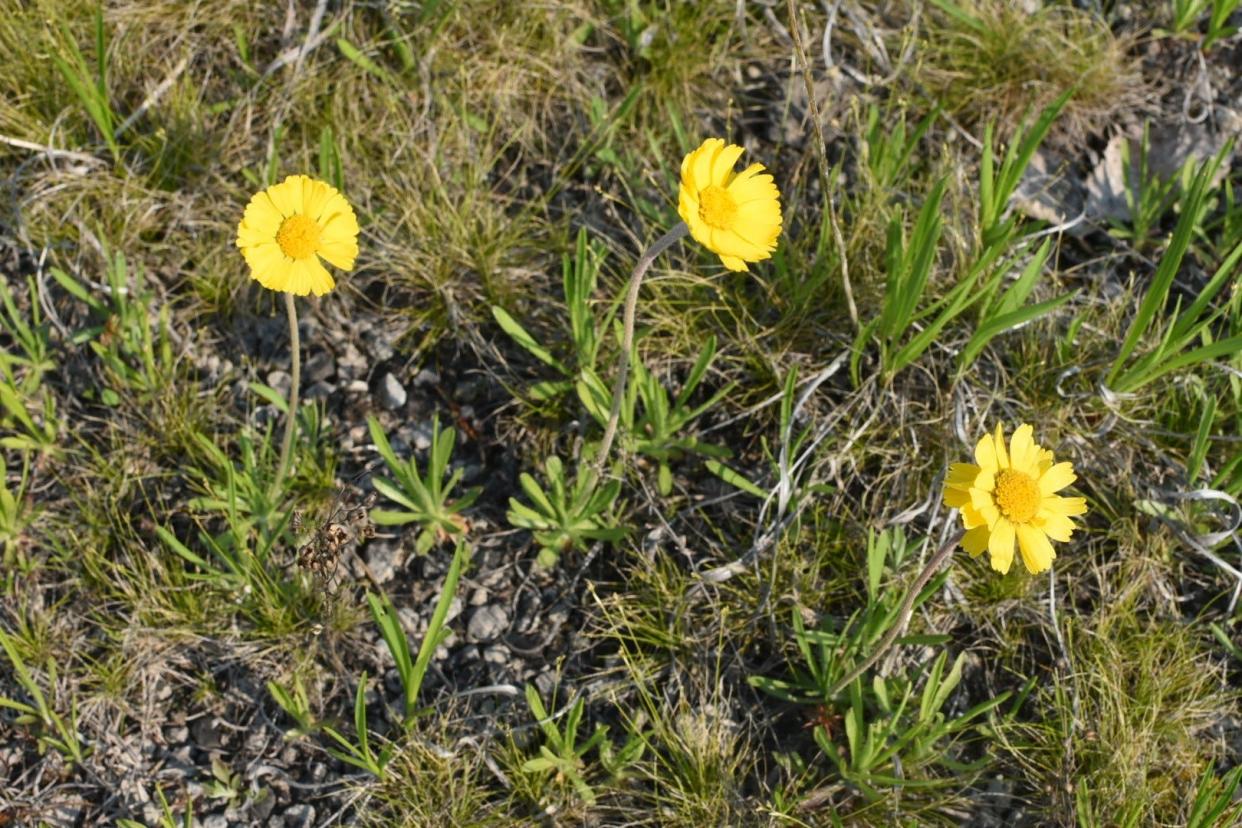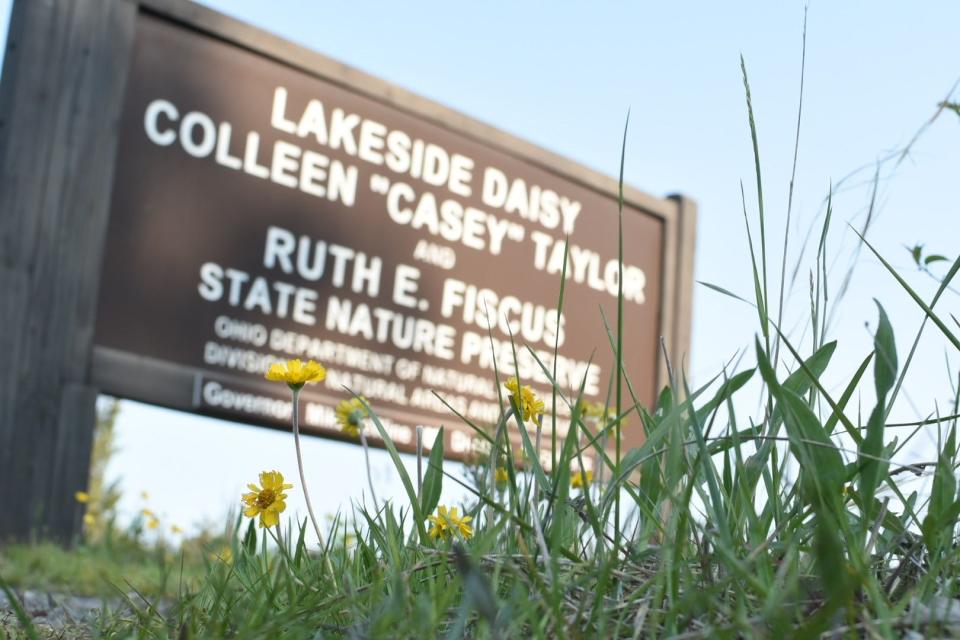Lakeside Daisy blooms against the odds in select locations

LAKESIDE-MARBLEHEAD - Marblehead’s old limestone quarries are aglow with the bright blooms of one of Ohio’s most spectacular wildflowers, the Lakeside daisy.
Tetraneuris herbacea, most commonly known as the Lakeside daisy, blooms from late April to mid-May in only a handful of spots in the world, including in Lakeside-Marblehead.
The small yellow flowers are a federally listed threatened species in the United States and Canada, with populations in Ohio, Michigan, the Bruce Peninsula and Mantioulin Island, Ontario, and two counties in Illinois.
Yellow perennial grows in rock barrens with shallow soils
The Lakeside daisy is a long-lived perennial that thrives in what scientists called an alvar habitat, a type of limestone pavement with little plant cover, which includes sparsely vegetated rock barrens with shallow soils.
These rocky outcrops have thin, alkaline soils and are quite dry in the dry seasons, making them inhospitable for many other plant species, so the lakeside daisy grows in unshaded full sun.
No other species shares its unique combination of habitat, appearance, and blooming date, according to the Ohio Department of Natural Resources.

“It’s such a beautiful asset to the community,” Marblehead Mayor Jacqueline Bird said of the Lakeside daisy. “We are blessed to have it.”
The largest patch encompasses 136 acres of old limestone quarry at the Lakeside Daisy Ruth E. Fiscus and Colleen “Casey” Taylor State Nature Preserve at 309 Alexander Pike in Marblehead.
Each daisy pops up with one flower
Each basal rosette of leaves usually produces a single 6-to-11-inch tall, leafless, erect stalk topped with a solitary flower.
All individuals within a given population tend to bloom about the same time, producing the spectacular effect of a golden blanket across the rocky landscape.
The preserve is open from a half hour before sunrise to a half hour after sunset. Pets are not permitted and there are no restrooms.
Lakeside daisies also bloom on Kelleys Island just a short ferry trip from the village of Marblehead.
Lakeside daisy populations in Ohio continue to be threatened by limestone quarrying.
In 1988, 19 acres of the abandoned Standard Slag Company’s (now LaFarge) quarry was acquired by the state of Ohio and made into a dedicated state nature preserve which was later named the Lakeside Daisy Ruth E. Fiscus and Colleen “Casey” Taylor State Nature Preserve.

Both Fiscus and Taylor were instrumental in protecting the Lakeside daisy population on the Marblehead peninsula.
Through the work of dedicated volunteers and conservation organizations, the Lakeside Daisy was spared from habitat destruction.
Monitoring of the populations occurs about every five years, according to the U.S. Fish and Wildlife Services.
Additional parcels were acquired over the last 30-plus years to create today’s 136-acre preserve.
“It draws many people here too,” Marblehead’s Mayor Bird said. “I hope people take advantage of this time (the bloom) to see it.”
This article originally appeared on Fremont News-Messenger: Marblehead's limestone quarries make perfect home for Lakeside daisy

